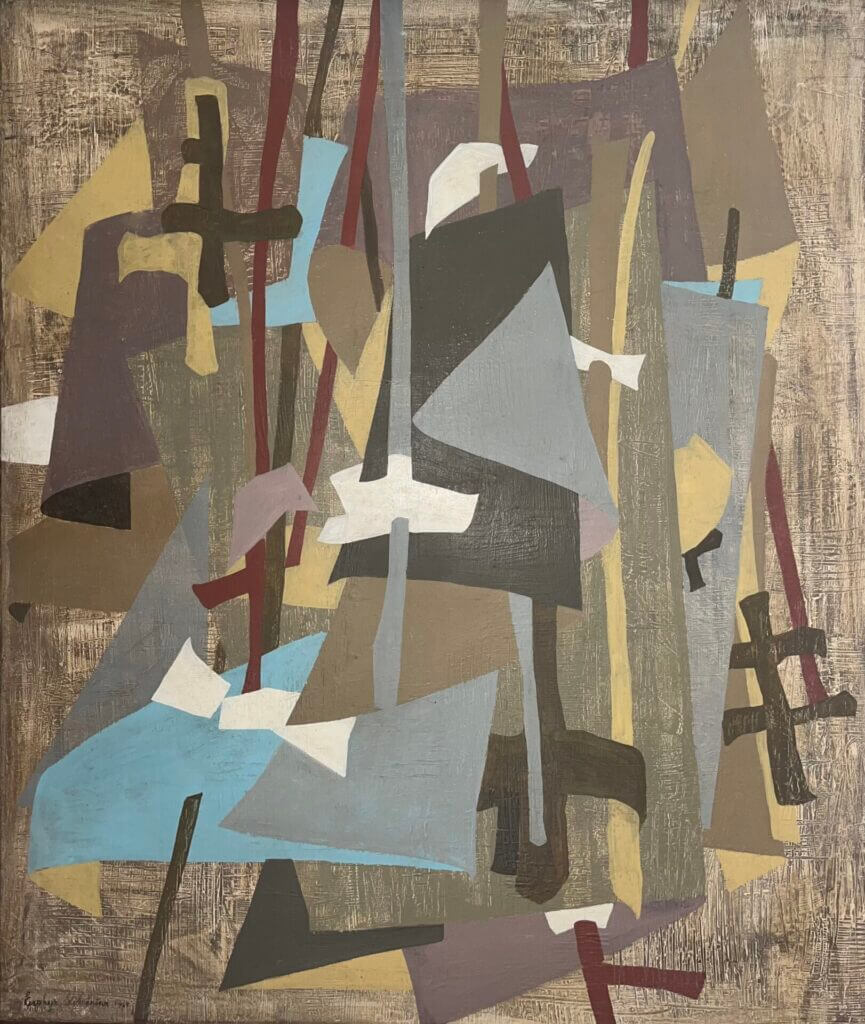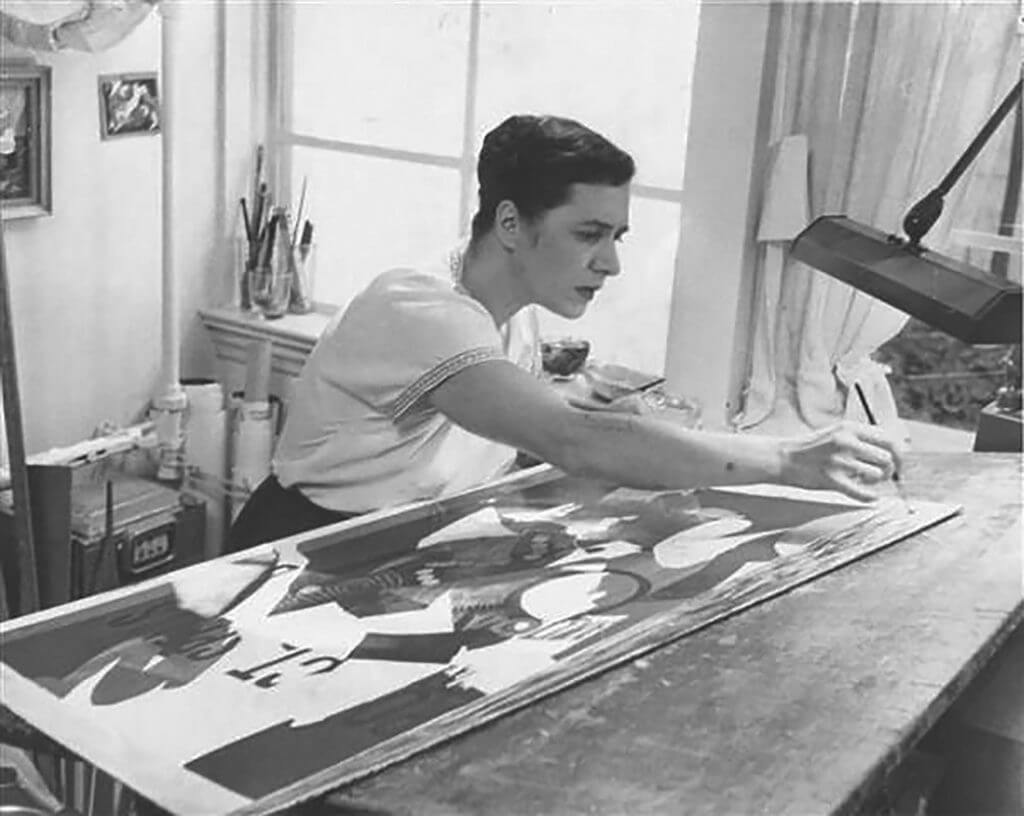Your currently viewing RAW Modern | Switch to RAW Contemporary
Abstract Composition, 1964
Catalogue essay by Blanche Llewellyn
Over the course of her 70-year career, Esphyr Slobodkina was a pioneer of early American abstraction and thus a significant participant in the avant-garde activities and exhibitions of the 1930s and 40s, which helped achieve recognition for abstract art in the United States.
Throughout her artistic journey, Slobodkina remained dedicated to presenting the world as she saw it, geometrically, dimensionally, always in motion and non-linear.
By 1936, Slobodkina had fully embraced abstraction as her preferred mode of artistic expression.
Whereas her early style incorporated textural shapes reminiscent of fabric cutouts, reflecting her lifelong fascination with collage and textiles, her later abstractions began to feature industrial motifs, a reflection of her deep-seated interest in architecture and mechanics.

